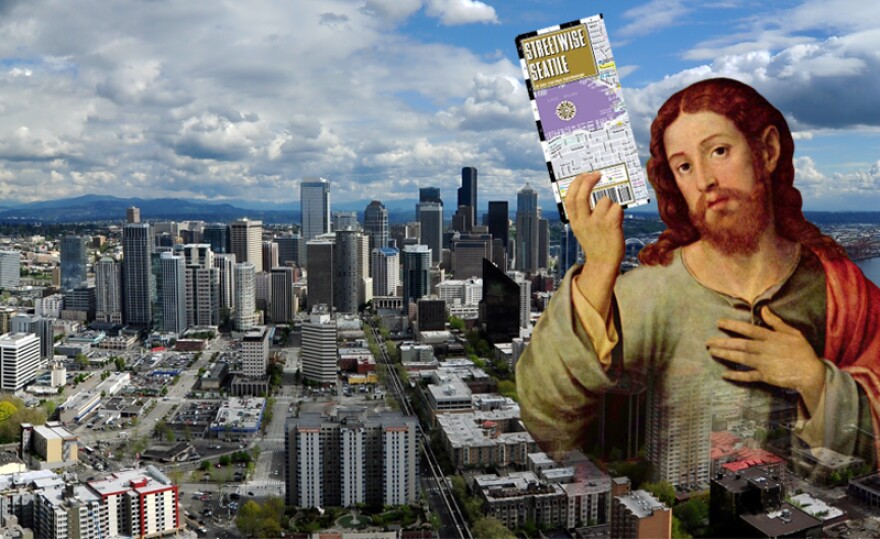You might say Jesus Christ Made Seattle Under Protest. Or, Jesus Christ Made Seattle Under Pressure.
Either way, this provocative statement is a big help when you’re trying to get around downtown Seattle.
It’s a mnemonic device, a sentence that helps you remember the names and order of the city’s streets. The first letter of each word corresponds to a pair of streets between Pioneer Square and Belltown. Jesus starts with a ‘J,’ which means Jefferson and James come first. The ‘C’ in Christ signals that Cherry and Columbia are next, and so on.
You might’ve already known that, but do you have any idea where the memory trick came from? Or, why it remains so popular?
A useful tool
It doesn’t seem to matter if you’ve lived here for three years or three decades, a lot of Seattleites rely on the phrase from time to time.
“Once in a while, I’m trying to remember what the next street is,” says Tait Bowers. “I’m like, J-J, C-C, M-M. So it makes it easy to know that they’re all paired up together”
Haley German Fisher agrees:
“If you have a specific destination, it’s just helpful to figure out how many blocks it might be with this little mnemonic device,” she says.
Yet, while people easily recall the helpful tool, they don’t necessarily use the same version of it.
The war of words
The most common disagreement is over the letter P. Derek Vi says it stands for Pressure. Sacharitha Bowers says Protest makes more sense.
“Pressure should be correct, I think,” Vi says.
“Why would god be pressured by anything,” says Bowers.
Some people also take issue with the J and the C. Tessa Heady says she’s not comfortable saying Jesus Christ. So, she prefers Julius Caesar Made Seattle Under Pressure.
“Why bring religion into this,” she says.
Ancient history
Alan Stein, a staff historian at HistoryLink.org, says people will stick by whichever variation they hear first. He started researching the mnemonic a few years ago.
“It’s not really documented, per se, except in vague terms,” he says. “But so many people know it. That to me, as a historian, is fascinating.”
He says since it’s passed on by word of mouth, its origin is unknown. He originally pegged it to the 1970s. He was stunned to learn how far off he was when he asked other history buffs about it on Facebook.
“We had people saying, ‘oh, I remember hearing that back in the 60s. I used that back in the World’s Fair.’ And then, somebody found it in Roger Sale’s book, “Seattle: Past and Present.” He mentions in there that it traces back to the era of the Denny Regrade, which would be a century ago."
A better device?
Wherever it came from, Kristen Simpson, project manager for the Seattle Department of Transportation, says it’s a good thing. It’s her job to make it easy for people to find their way around. Even though her work has made her pretty familiar with the city streets, she says she still uses the mnemonic.
She’s even taken it a step further:
“I did make a little addition to it for myself to remember the difference between Pike and Pine,” she says. “Pine Street has an ‘N’ in it and Pine Street is north of Pike.”
Now she just wishes someone would expand it beyond the 12-block section of downtown.
Of course, we may not need these memory tricks much longer. Now, we can just ask our smart phones for directions…





